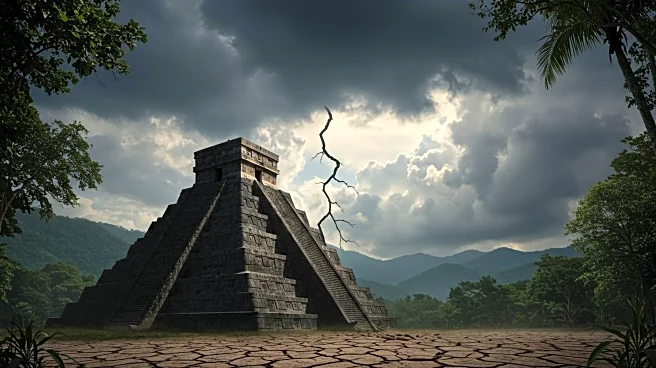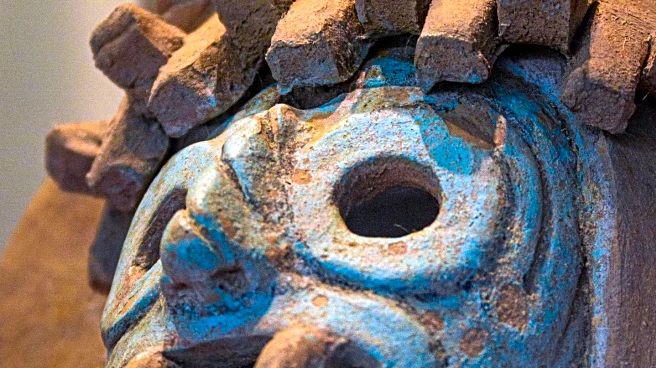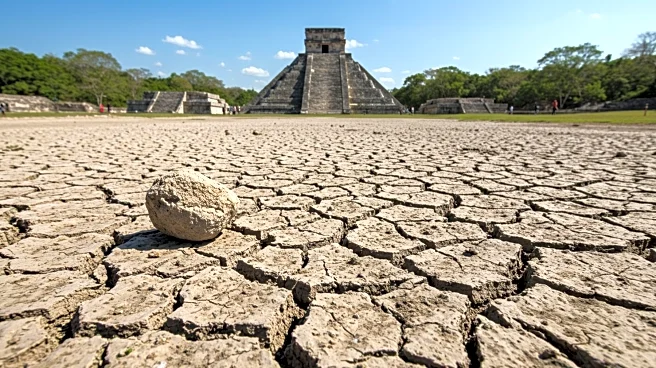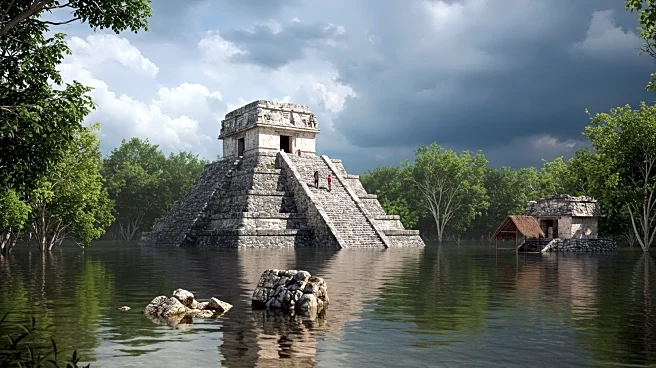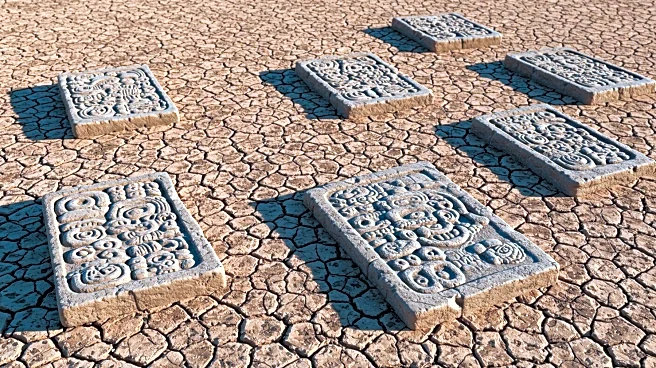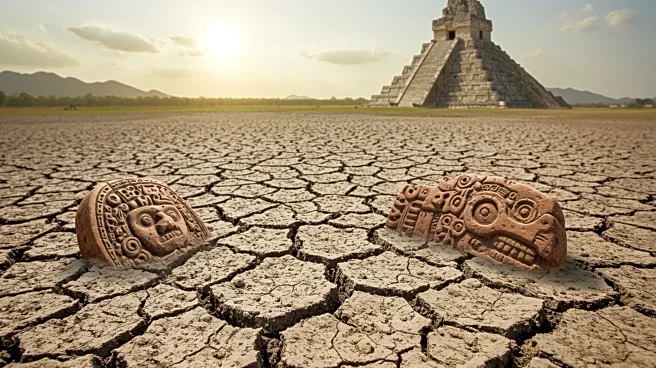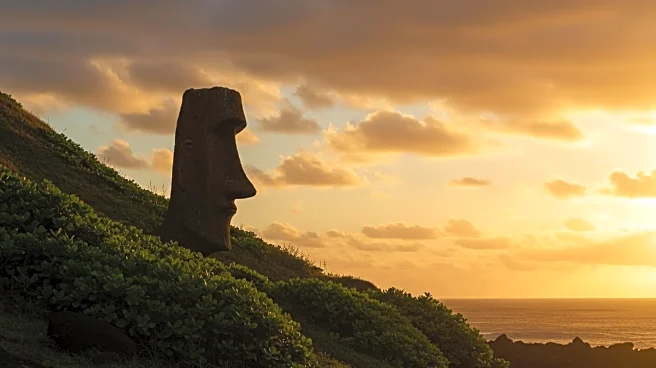What is the story about?
What's Happening?
Researchers from the University of Cambridge have discovered chemical fingerprints in a stalagmite from a Mexican cave that reveal a series of severe droughts during the Terminal Classic period of the Maya civilization. The study, published in Science Advances, analyzed oxygen isotopes in the stalagmite to determine rainfall levels between 871 and 1021 CE. This period coincides with the societal decline known as the Maya collapse, where southern limestone cities were abandoned and political power shifted north. The data indicates eight wet season droughts lasting at least three years, with the longest spanning 13 years. These findings align with historical evidence of halted monument construction and political activity at major northern Maya sites like Chichén Itzá during these climate stresses.
Why It's Important?
The study provides a new framework for understanding human-climate interactions during the Maya collapse, offering precise climate data that complements archaeological records. The findings suggest that prolonged droughts significantly impacted Maya society, potentially contributing to its socio-political upheaval. This research enhances the understanding of how climate change can affect civilizations, offering insights into the resilience and adaptability of societies facing environmental challenges. The ability to isolate wet season conditions provides a detailed view of how climate directly influenced agricultural success, which was crucial for the Maya's survival.
What's Next?
The researchers suggest that further analysis of stalagmites from this and other caves could provide more detailed insights into the Terminal Classic period. This could include information on the frequency and severity of tropical storms, offering a broader understanding of climate impacts on the Maya civilization. The study opens avenues for applying similar methods to other historical periods, potentially revealing fine-grained climate data that can be compared with historical records.
Beyond the Headlines
The research highlights the importance of integrating climate data with historical and archaeological evidence to understand past human societies. It underscores the potential for climate change to disrupt civilizations, offering lessons for modern societies facing similar environmental challenges. The study also demonstrates the value of stalagmites as a tool for reconstructing detailed climate histories, which could be applied to other regions and time periods.
AI Generated Content
Do you find this article useful?
